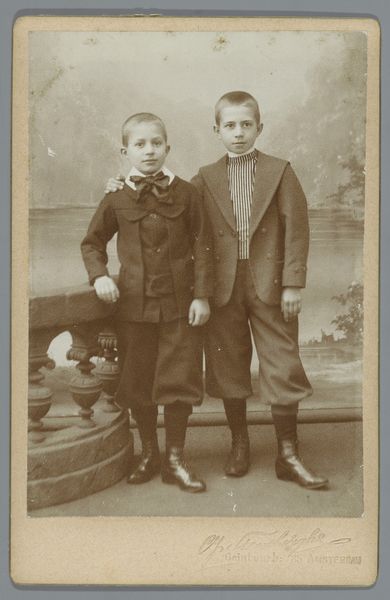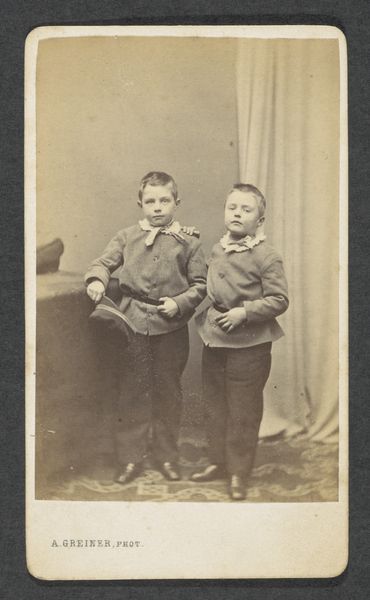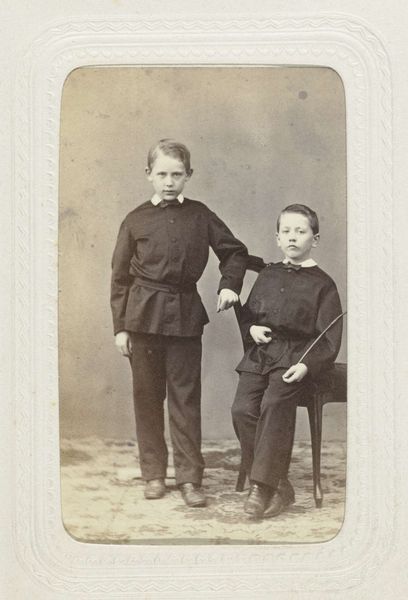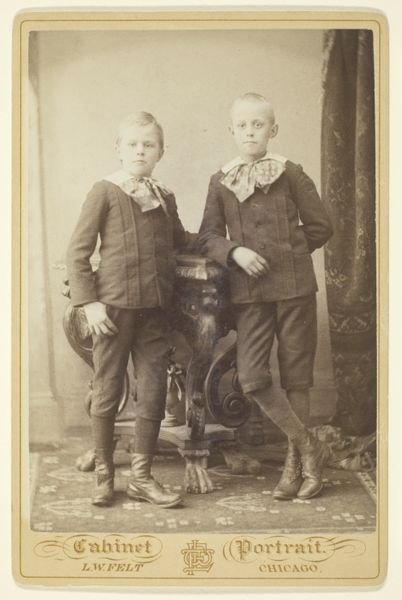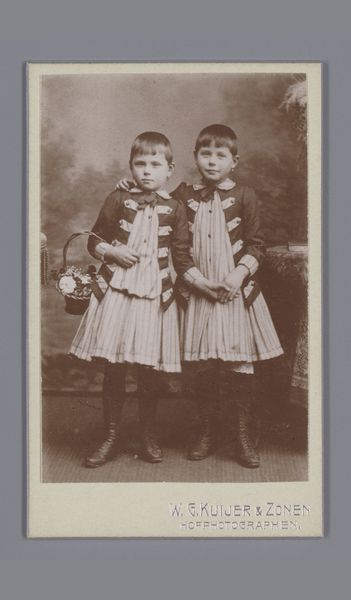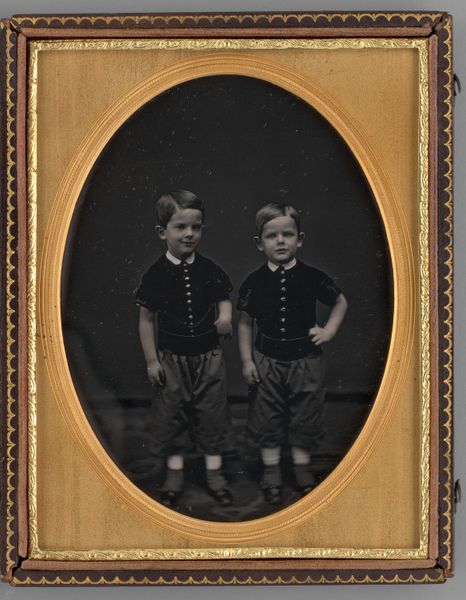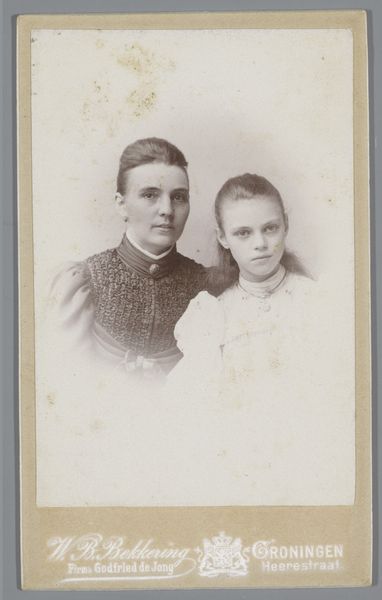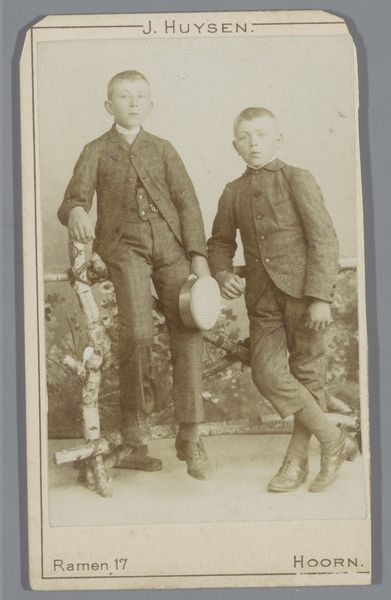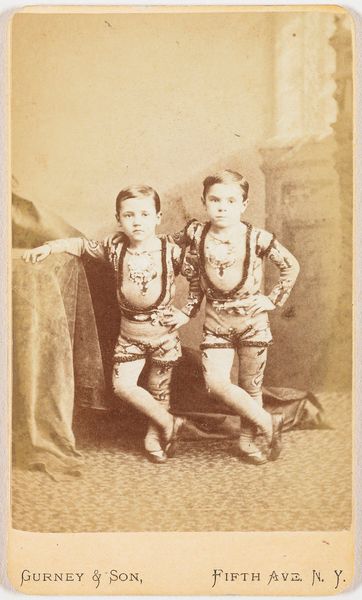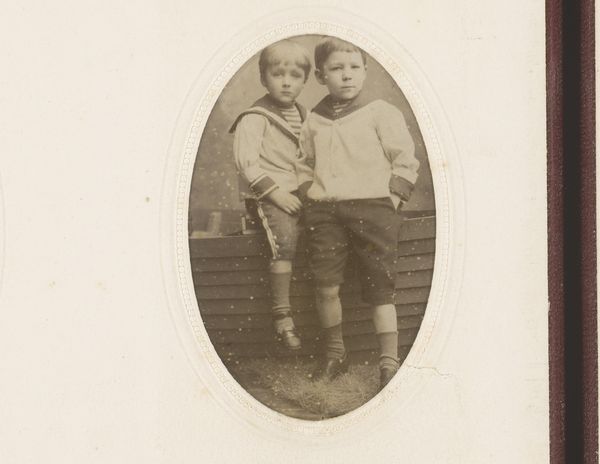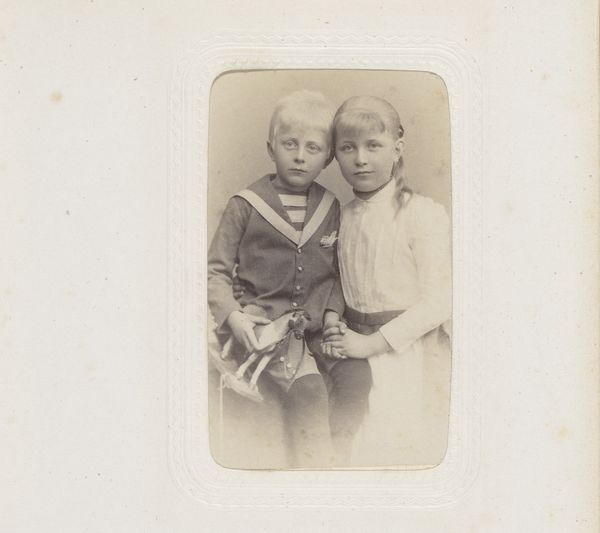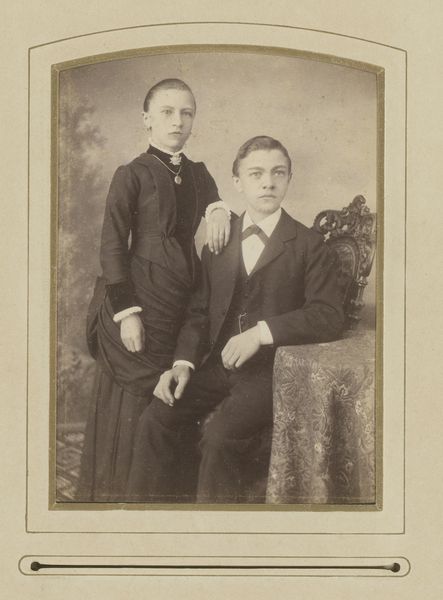
photography
#
portrait
#
aged paper
#
vintage
#
male fashion
#
archive photography
#
photography
#
historical fashion
Dimensions: length 104 mm, width 62 mm
Copyright: Rijks Museum: Open Domain
Curator: Immediately I see the sepia tones and think, "archive." There's a formality to this. Editor: This is indeed an old photographic print titled "Portret van twee onbekende jongens" which translates to Portrait of two unknown boys, attributed to Georges Raynaud, likely taken between 1882 and 1902. The clothing tells part of that story. Curator: Look at the cut of their suits, and how deliberately starched their collars are. Everything, including the poses, speaks of social standing. The photographer captured more than just likenesses. He memorialized belonging. Editor: Absolutely. Consider the process. The collodion process during this era necessitated longer exposure times, demanding stillness and composure. This medium, while technically advancing photography, imposed its own limitations, and by extension influenced how the sitter presented themselves. Curator: I wonder if the photographer deliberately had one of the boys place an arm on the shoulder of the other. It speaks volumes about their relationship, and, more broadly, perhaps speaks to social cohesion and familial expectation at the time? Editor: Possibly, or perhaps it was purely functional—simply a means to keep two restless youngsters still for the duration of the exposure! It speaks to a standardization within the making of such portraiture. Look at the small object they clasp—a letter, a prayer book? This small prop offers a clue to the intended audience of the portrait, its inherent social value within the family or social sphere. Curator: Do you think this would have hung prominently, on display for visitors to see? Or would something like this be reserved for private viewing only? That location implies something different for what was at stake for those presenting it. Editor: Given its fragile nature and the cost of reproduction, most likely a place of honor. And it would likely act as a statement—an implicit declaration of propriety and stability in an ever-shifting social climate. The boys themselves become artifacts of their family's values, materialized in emulsion and light. Curator: It really does show how photographs from the era weren't just portraits. Editor: They were complex negotiations of social value made material through photographic means.
Comments
No comments
Be the first to comment and join the conversation on the ultimate creative platform.
